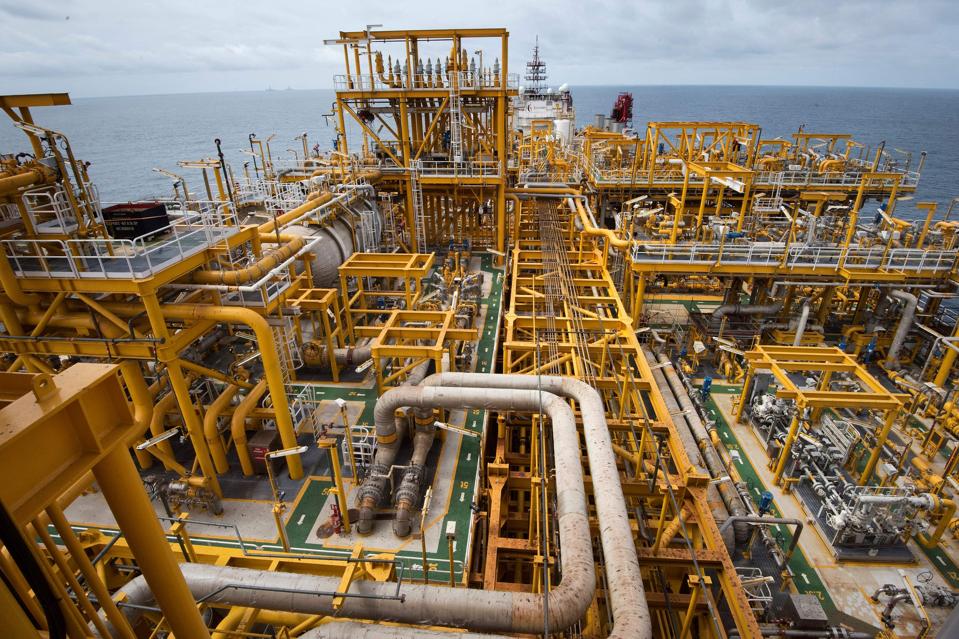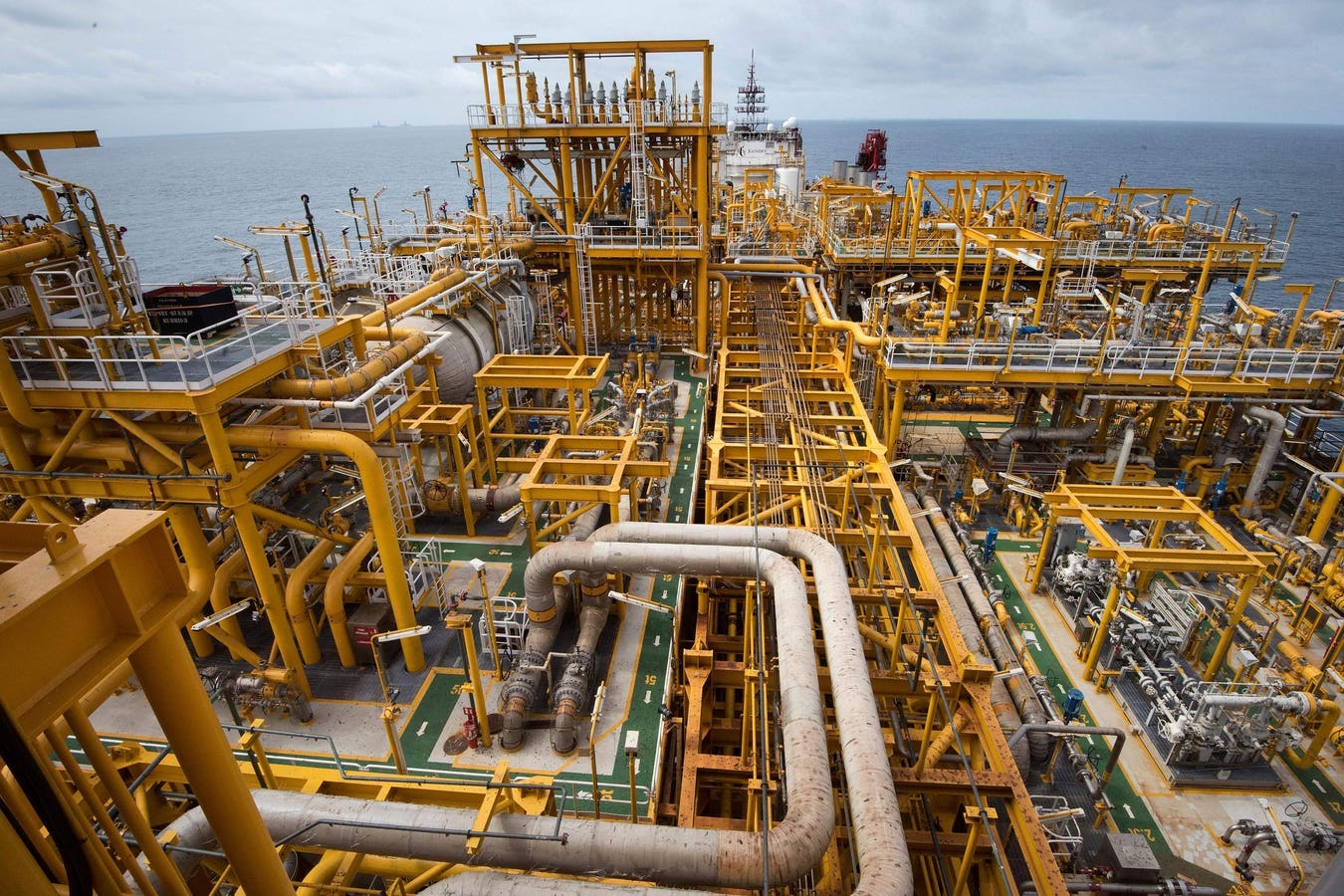
A floating production storage and offloading or “FPSO” vessel around 250km off the coast of Angola in the Atlantic Ocean. (Photo: Rodger Bosch)
AFP via Getty Images
Oil prices slumped to their lowest in five months on Tuesday on market fears of oversupply in the run up to end of the year and first quarter of 2026.
At 11:02am EDT on Tuesday, global proxy benchmark Brent’s front-month futures contract was down 2.08% or $1.32 barely holding the price floor at $62 per barrel, and having dropped by as much 3% in European trading.
Concurrently, the U.S. West Texas Intermediate front-month futures contract was trading at $58.26 a barrel, down 2.01% or $1.95%.
The latest price slump followed a report by the International Energy Agency pointing to a “large surplus” in global supplies. It also came after Friday’s selloff on news of a ceasefire in Gaza between Israel and Hamas, brokered by U.S. President Donald Trump. The development lowered the geopolitical risk in the crude market.
However, the performance of Brent has not offered any convincing signs of encouragement for those betting on a price upside for much of the trading year. Following Tuesday’s intraday slump, the benchmark is 10% lower compared to three months ago.
It is also down 17% year-till-date, and 17.5% on an annualized basis having not managed to hold a $70 price floor for any convincing length of time so far into 2025.
Wider Market Dynamic
This isn’t surprising given the wider market dynamic. In a bid for market share, OPEC+, a select group of Russia-led oil producers, and the Organization of the Petroleum Exporting Countries spearheaded by Saudi Arabia, continue to add barrels to the global supply pool.
At its latest meeting held earlier this month, the group brought back another 137,000 barrels per day of production. But regardless of what OPEC+ does or doesn’t, the market is likely heading for a year-end to early 2026 oversupply scenario.
ForbesOPEC’s 2014 Bid To Tame U.S. Shale Failed. Will 2025 Be Different?By Gaurav SharmaForbesVenture Capital Inflows Will Keep Green Investments Buoyant To 2030By Gaurav SharmaForbesTrump’s Top Envoys Tell Europe U.S. Will Double Gas Exports In 5 YearsBy Gaurav Sharma
That’s because its production is currently accompanying record levels of non-OPEC, especially U.S., production. According to the U.S. Energy Information Administration, the nation’s crude production, which hit an all-time high of 13.47 million bpd in April, is still above 13 million bpd.
IEA Report Sends Further Bearish Signals
Non-OPEC production is also being boosted by higher output from Brazil, Canada, Guyana and Norway. Collectively, non-OPEC production growth is likely to rise by 1.6 million bpd this year, and 1.2 million bpd, according to the IEA.
Its monthly report for October, the Paris, France-based think-tank indicated that preliminary market data pointed to global supply in September rising by “a massive 5.6 million bpd compared with a year ago” and “sharply higher oil stocks.”
With supply rising faster than it points to an overhang that would be hard to dismiss, even though attacks by Ukraine on Russian energy infrastructure during their ongoing hostilities do add a layer of geopolitical uncertainty.
Even the most optimistic 2025-26 oil demand growth projection of 1.3 million bpd, offered by OPEC itself, falls well short of a currently projected non-OPEC production growth figure alone, notwithstanding the growth in OPEC+ production.
For its part, the IEA further downgraded its forecast for global oil demand growth this year by 30,000 bpd to 710,000 bpd, attributing it to a challenging and uncertain economic climate.
It noted: “Oil use will remain subdued over the remainder of 2025 and in 2026, resulting in annual gains forecast at around 700,000 bpd in both years. This is well below historical trend, as a harsher macro climate and transport electrification make for a sharp deceleration in oil consumption growth.”
With IEA’s demand growth projection now almost half that OPEC’s, the bullish case for oil has taken another near-term knock.
Disclaimer: The above commentary is meant to stimulate discussion based on the author’s opinion and analysis offered in a personal capacity. It is not solicitation, recommendation or investment advice to trade oil and natural gas stocks, futures, options or products. Oil and natural gas markets can be highly volatile and opinions in the sector may change instantaneously and without notice.

